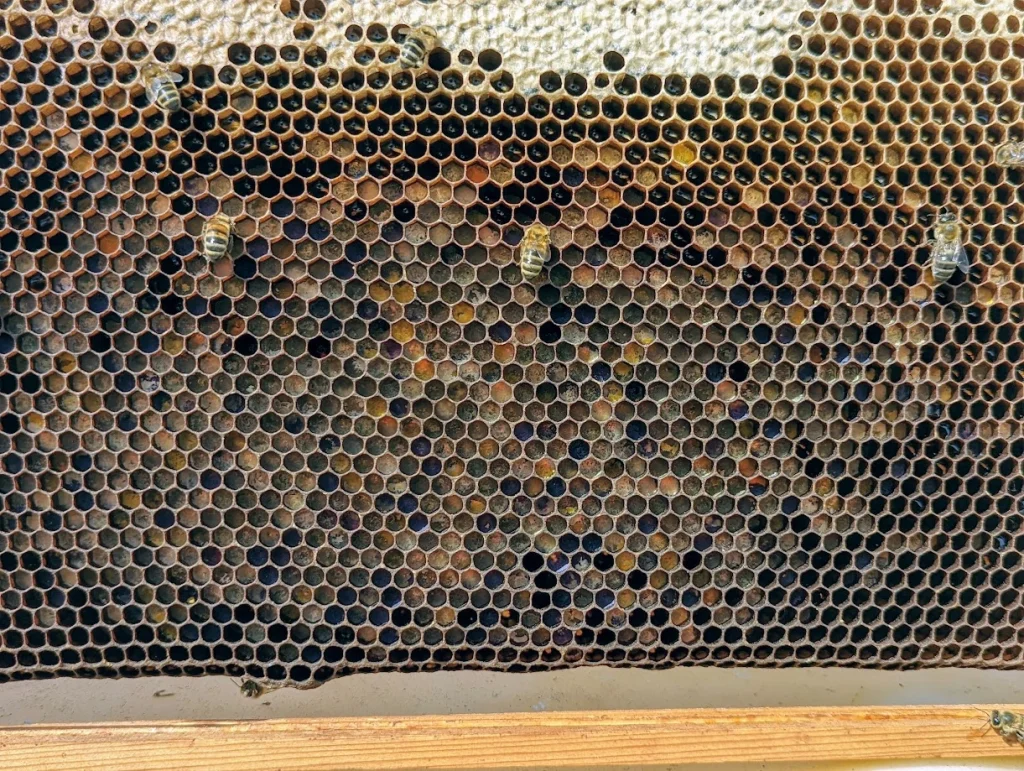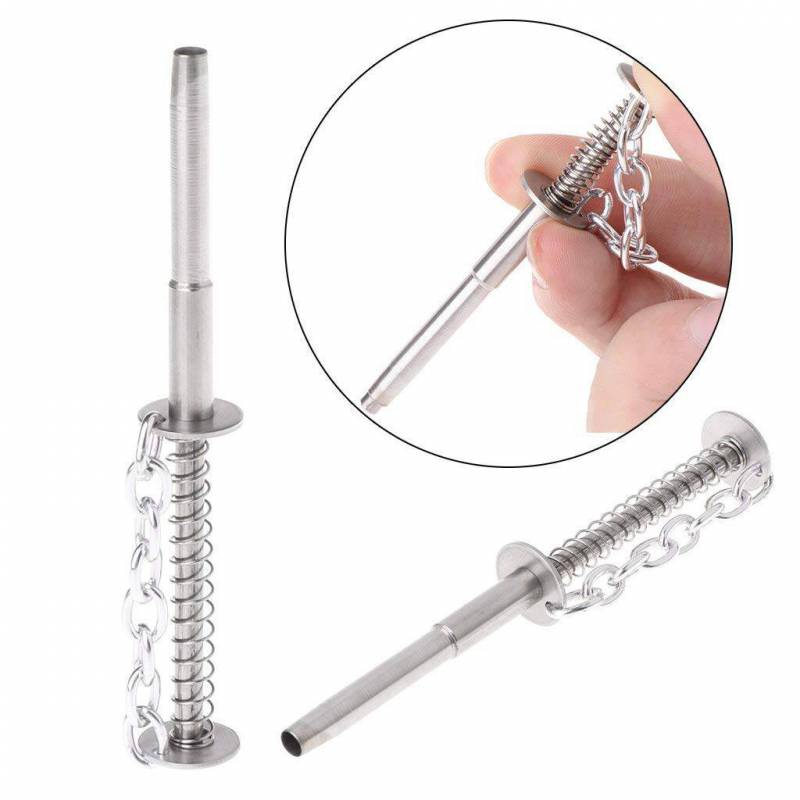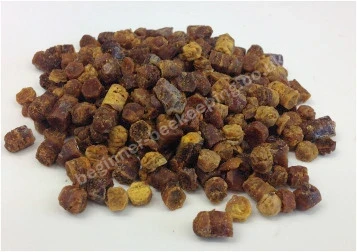What Is Bee Bread (Perga)?
When forager bees return from the fields, their pollen baskets aren’t just full of colour – they’re carrying the foundation of the hive’s protein supply. Inside the colony, this pollen undergoes a remarkable transformation, becoming what’s known as bee bread, or perga.
Bee bread is fermented pollen, mixed by bees with honey, nectar, and salivary enzymes, then stored in honeycomb cells and sealed with a thin layer of honey. Over time, lactic acid bacteria and yeasts naturally ferment the mixture. This solid-state fermentation increases its nutritional value, breaks down tough pollen shells, and preserves it for long-term use.
The result is a highly digestible, nutrient-rich food source for the colony – especially crucial for feeding developing larvae and young worker bees.
How Bees Make Bee Bread

According to entomological research, honey bees collect pollen using branched hairs that trap grains as they move between flowers. These grains are moistened with nectar and enzymes and packed into “pollen baskets” on their hind legs. Once back at the hive:
- Foragers deposit pollen into empty comb cells.
- House bees add honey and enzymes, encouraging lactic acid fermentation.
- Cells are capped with honey, sealing the mixture from air and initiating the preservation process.
This biochemical process is similar to making yoghurt or sauerkraut – fermentation enriches and stabilises the food, enhancing nutrient absorption and shelf life. Within a few days, simple pollen becomes bee bread (perga), a cornerstone of bee nutrition.
Why Bee Bread Matters to the Hive

Bee bread is the protein base of the honey bee diet. It fuels the development of young workers, particularly the glands in their heads that produce brood food. Without access to pollen or bee bread, colonies cannot rear brood effectively, and adult bees become smaller, weaker, and shorter-lived.
In the brood area of the hive, bee bread forms a “rainbow” ring above the brood cells – ready for nurse bees to access when feeding larvae.
Bee Bread vs Bee Pollen: What’s the Difference?
While both products come from the same source, bee bread and bee pollen differ greatly in digestibility and nutrient bioavailability:
| Feature | Bee Pollen | Bee Bread (Perga) |
|---|---|---|
| Processing | Collected directly from flowers | Fermented by bees with honey and enzymes |
| Digestibility | Hard pollen shells limit absorption | Fermentation breaks shells, improving absorption |
| Shelf Life | Short | Naturally preserved |
| Bioactivity | Moderate | Rich in antioxidants, amino acids, vitamins, and fatty acids |
In short, bee bread is bee pollen evolved – nature’s own probiotic supplement.
Chemical Composition of Bee Bread (Perga)
Research published in the Journal of Trace Elements and Minerals (Ćirić et al., 2022) analysed bee bread from across the world. Results show that perga contains over 250 different compounds, including:
- Proteins (15–23%): rich in essential amino acids such as leucine and phenylalanine.
- Carbohydrates (24–75%): mainly fructose, glucose, and sucrose.
- Lipids (1–11%): high in polyunsaturated fatty acids (PUFAs) like omega-3 and omega-6.
- Vitamins and enzymes: supporting metabolism and immunity.
- Minerals: potassium, calcium, magnesium, iron, zinc, and phosphorus.
- Phenolic compounds: quercetin, kaempferol, myricetin, luteolin – potent antioxidants.
This complex profile gives bee bread its reputation as a functional food with antibacterial, antifungal, and antiviral properties.
Health Benefits of Bee Bread (Perga)
Modern research and traditional apitherapy agree that bee bread offers multiple benefits:
- Immune Support: Bioactive compounds stimulate antibody production and strengthen immune responses.
- Digestive Health: Naturally rich in probiotics from lactic acid fermentation.
- Antioxidant Protection: Phenolics and flavonoids help combat oxidative stress.
- Heart Health: The balance of omega-3 and omega-6 fatty acids supports cardiovascular function.
- Energy and Recovery: High nutrient density makes it popular among athletes and those recovering from fatigue.
Emerging studies even explore its potential antiviral effects, including inhibition of SARS-CoV-2 replication in laboratory models.
Bee Bread in Human Nutrition
In folk medicine and apitherapy, perga is often consumed as a natural supplement – a few granules a day for immunity, stamina, and vitality. While research is ongoing, its combination of macronutrients, micronutrients, and bioactive compounds qualifies it as a functional food.
Unlike raw pollen, which can trigger allergies or pass undigested, bee bread is pre-fermented, making it gentler on the human digestive system and more nutritionally available.
The Role of Bee Bread in Beekeeping and Ecology
For beekeepers, ensuring colonies have adequate pollen stores – or supplementing during dearth periods – is essential. Healthy stores of bee bread support brood rearing, queen fertility, and colony strength, directly influencing honey yields.
Planting diverse, pollen-rich forage (such as willow, dandelion, clover, and borage) sustains the continuous production of bee bread throughout the season.
Final Thoughts: The Power of Perga
Bee bread, or perga, represents one of nature’s finest examples of biochemical alchemy. From humble pollen grains, bees craft a fermented food that nourishes the hive, supports the next generation, and offers remarkable potential for human health.
As interest in natural nutrition grows, bee bread perga deserves its place among the world’s most intriguing superfoods – born of teamwork, enzymes, and the quiet genius of the honey bee.
Ćirić, J., Haneklaus, N., Rajić, S., Baltić, T., Branković Lazić, I., & Đorđević, V. (2022). Chemical composition of bee bread (perga), a functional food: A review. Journal of Trace Elements and Minerals, 2, 100038. https://doi.org/10.1016/j.jtemin.2022.100038
